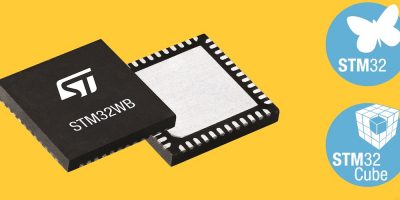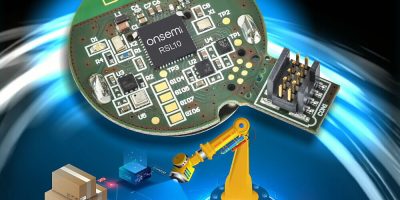Firmware and tools for the STM32WB wireless microcontrollers have been added by STMicroelectronics. The wireless microcontrollers can be incorporated in economic, power-efficient wireless equipment for smart buildings, smart industrial systems and smart infrastructure.
The integrated STM32WB contains a 2.4GHz radio and Arm Cortex-M4 and Cortex-M0+ microcontroller on the same chip, which eliminates RF circuit design challenges which can impede a design project. A small number of external components are needed, such as an antenna, to complete the hardware design, says ST. The microcontroller includes a 12-bit ADC, digital interfaces and a crystal-less USB 2.0 full speed interface in selected models. It supports Bluetooth Low Energy 5.2, Zigbee, OpenThread and proprietary protocols, including combinations of protocols with concurrent modes.
Development tools and software in the STM32Cube ecosystem is supported by third party developer resources.
The STM32WB ecosystem provides all the necessary embedded software bricks and tools to get users started easily with their applications. The STM32CubeWB microcontroller package has examples and a set of peripheral drivers, together with radio stacks including Bluetooth 5.2, Zigbee 3.0, OpenThread v1.1 and 802.15.4 MAC for proprietary protocols, as well as example implementations of several concurrency models (static and/or dynamic) for these stacks.
Software tools like STM32CubeMX and STM32CubeIDE offer direct support of the radio stacks in their GUI (graphical user interface) for easy access and configuration. Users can select and configure profiles and clusters for popular standards and access ready-to-use examples.
Extra controls for the power estimation tool contained in the STM32CubeMX configurator help calculate the RF-subsystem contribution to overall power consumption budget. Users can set up various scenarios to assess battery runtime.
Another introduction is the STM32CubeMonitor-RF evaluation tool. Supporting Bluetooth Low Energy and generic 802.15.4 radio technologies, STM32CubeMonitor-RF performs transmission / reception tests and RF measurements. It also assists writing test scripts and testing protocol and command sequences. The latest version introduces a sniffer capability for 802.15.4 protocols to develop products for mesh networks.
All tools and radio protocol stacks within the STM32CubeWB wireless ecosystem are appropriately certified and provided free of charge, along with documentation detailing the accompanying Bluetooth 5.2 and 802.15.4 certification items.
Evaluation boards for STM32WB wireless microcontrollers are the P- NUCLEO-WB55 pack with Nucleo-64 board and USB dongle, NUCLEO-WB55RG and NUCLEO-WB15CC Nucleo-64 boards, and STM32WB5MM-DK Discovery kit.







